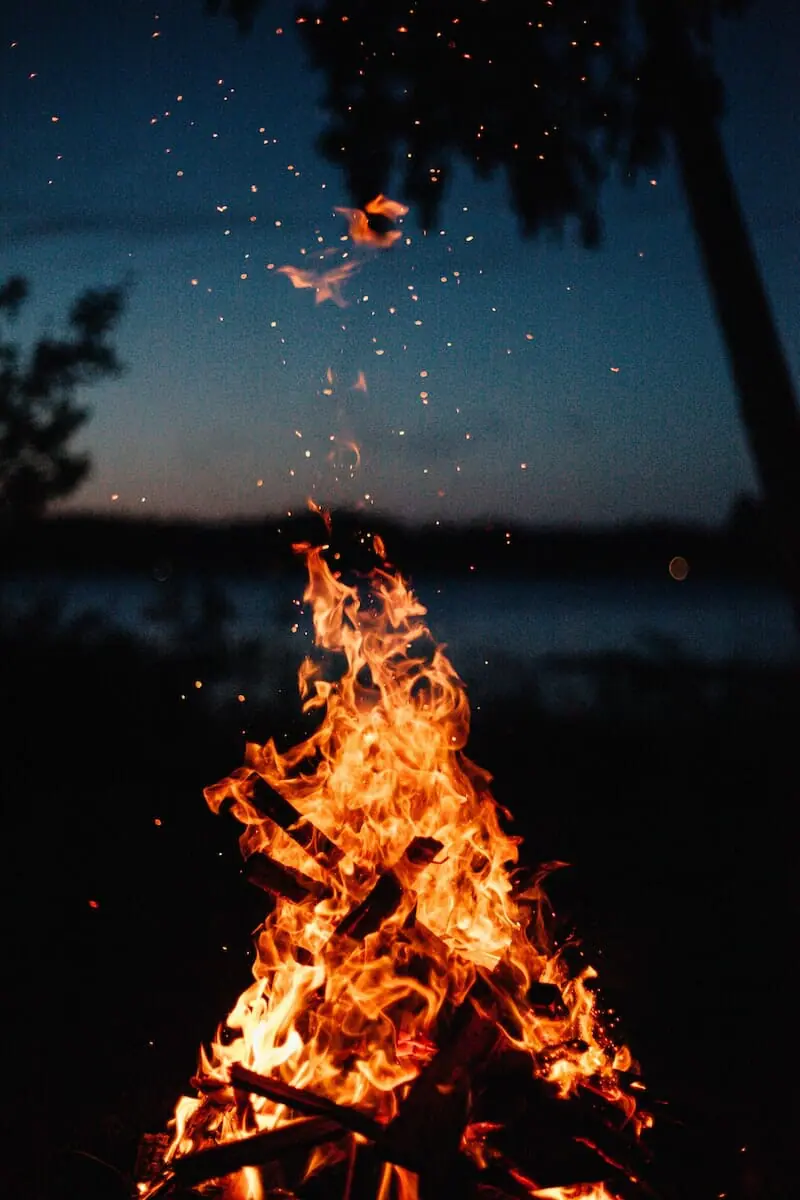- When a fire burns, the heat from the flames causes the air around it to expand. This expansion of air creates pressure waves that we perceive as sound.
- The intensity of the sound depends on how quickly the air is heated and expanded – which in turn is determined by the size and intensity of the fire.
- The gases and cellulose breaking down makes the pockets of trapped steam burst open from the wood. This is why you hear the crackling and popping noises.
So, when you hear a crackling fire, it’s the sound of that pressure wave moving through the air!
How is the wood getting water inside of it
Water is drawn into the wood by capillary action. This happens when the water molecule is attracted to the wood surface due to the difference in polarity between the water and wood molecules.
The water moves up the tree through small pores in the tree bark, and it can travel several feet up the trunk before it’s finally absorbed by the cells inside of the tree. Firewood then, is not just dried out, but it’s actually full of water!
When this water is heated by the fire, it turns to steam and creates those distinctive popping noises. So next time you’re sitting around a cozy fire, listen for the sound of water molecules turning to steam!
I love the sounds…
The sounds of a crackling fire are some of the most comforting noises imaginable. There’s something about the way they dance and pop that just makes you feel cozy and warm inside.
But did you know that the sound of a fire is determined by the type of wood that’s burning? Seasoned firewood makes a much better burn than unseasoned wood, and it also creates a nicer sounding fire.
That’s because when the wood is seasoned, the water inside of it has already been drawn out – so there’s no need for the heated water to turn into steam and create those popping noises.
If you want to enjoy the sound of a crackling fire all night long, then be sure to use seasoned wood! It’ll make your fire burn brighter and longer, and you’ll love the sound it makes.

